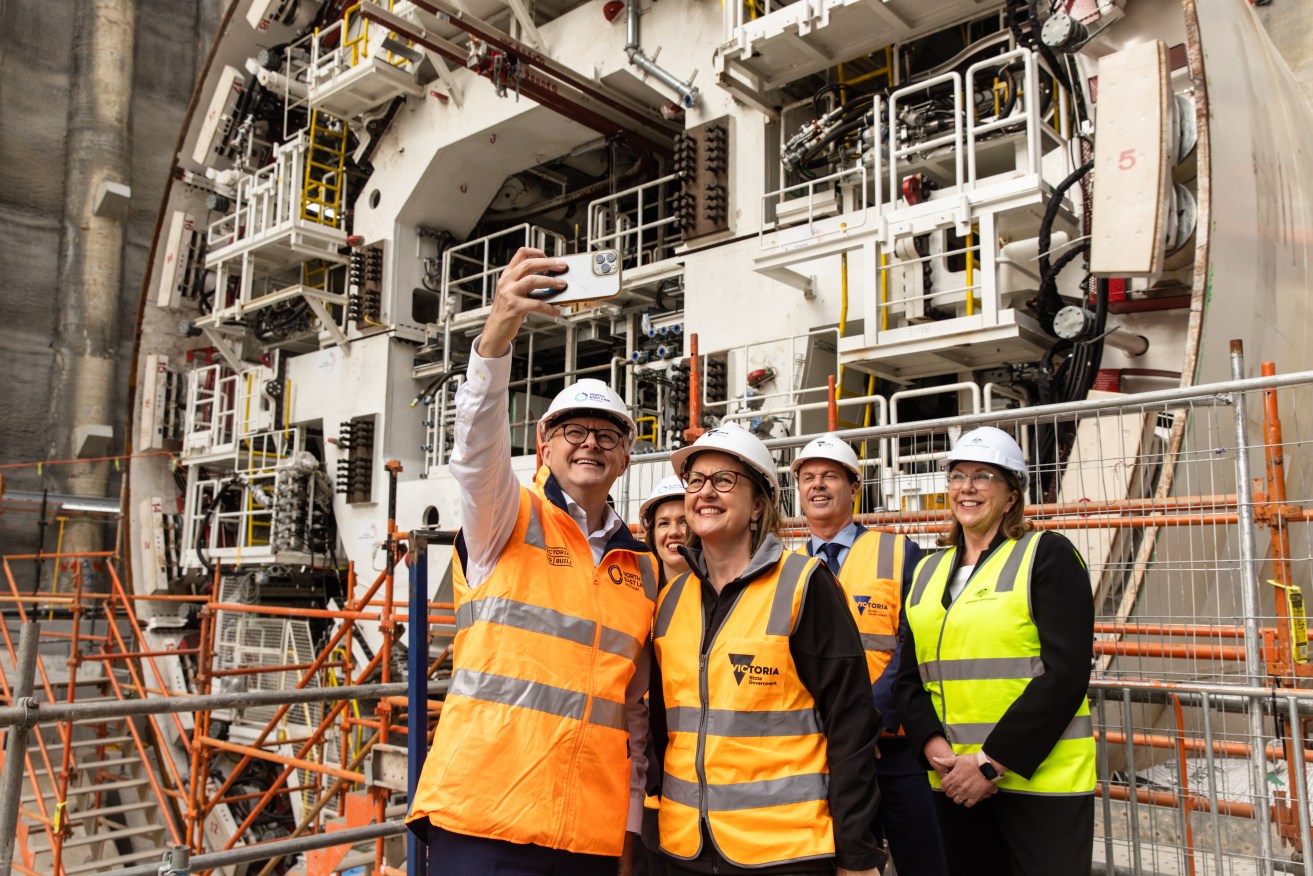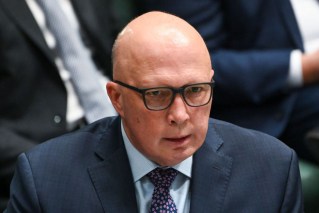Federal budget roadshow hits full gas in Melbourne

Anthony Albanese with Victorian Premier Jacinta Allan at the North East Link tunnel site. Photo: AAP
Federal budget messaging is in full swing, with money set to flow into a Melbourne toll road project and a new gas policy unveiled.
Just days out from the Labor government’s third budget, Prime Minister Anthony Albanese confirmed the Commonwealth would provide $3.25 billion for Victoria’s blown-out North East Link road project.
A long-term commitment to gas as an energy source has also been announced, which the Resources Minister Madeleine King said would support the Future Made in Australia industry policy – a cornerstone of its upcoming budget.
Low carbon industries and those serving the national interest are in line for direct support from the federal government under the wide-ranging policy.
King said gas was “crucial” for the industry policy as it “supports manufacturing, food processing and refining of critical minerals which will help Australia and the world to lower emissions”.
The gas strategy, which has already drawn sharp rebuke from climate and environmental groups, shores up a role for gas as “an important source of energy through to 2050 and beyond”.
Household incomes are also expected to grow after living standards took a hit from rising taxes and swelling mortgage repayments in recent years, new Treasury modelling shows.
Stage three tax cuts, cooling inflation and bulkier pay packets are expected to underpin a 3.5 per cent increase in real household disposable incomes in 2024/25 – the fastest rate of growth in more than a decade, excluding the pandemic.
Wage growth should provide the bulk of the turnaround in disposable income, with the tax cuts contributing to more spending power.
Consumer prices are tipped to keep moderating and help improve household buying power, with inflation already well down from its 7.8 per cent peak in late 2022.
Real disposable income refers to what income is left over for households to spend or save after tax and interest payments are accounted for and when adjusted for inflation.
Household incomes have been languishing over the past few years as cost of living pressures weighed on purchasing power and mortgage repayments ballooned as the Reserve Bank responded to rising inflation by cranking interest rates higher.
Australia’s income tax burden has also been growing, which the Organisation for Economic Co-operation and Development has chalked up to bracket creep and the end of the low and middle income tax offset.
Treasurer Jim Chalmers said the budget was all about easing cost-of-living pressures.
“Decent wages and bigger tax cuts for more people are a big part of helping people earn what they need and deserve to provide for their loved ones,” he said.
Further cost of living relief is expected, though the treasurer says it will need to be carefully designed so it doesn’t fuel inflation.
– AAP








